NavSource Online: Submarine Photo Archive
S-4 (SS-109)

S-4 Class Submarine (Government Type): Laid down, 4 December 1917, at Portsmouth Navy Yard, Portsmouth, NH; Launched, 27 August 1919; Commissioned, USS S-4, 19 November 1919; Redesignated USS S-4 (SS-109), 17 July 1920; on 17 December 1927, while surfacing from a submerged run over the measured-mile off Provincetown, Cape Cod, Mass., she was accidentally rammed and sunk by the U.S. Coast Guard vessel Paulding (CG-17), ex USN destroyer (DD-22), with the loss of 40 men;
Decommissioned, 19 March 1928; Recommissioned, 16 October 1928; Decommissioned 7 April 1933 and laid up in the reserve fleet; Struck from the Naval Register, 15 January 1936; Final Disposition, destroyed by sinking, 15 May 1936. Specifications: Displacement, Surfaced: 876 t., Submerged: 1092 t.; Length 231' ; Beam 21' 10"; Draft 13' 1"; Speed, surfaced 14.5 kts, submerged 11 kts; Depth Limit 200'; Complement 4 Officers, 34 Enlisted; Armament, four 21" torpedo tubes, 12 torpedoes, one 4"/50 deck gun; Propulsion, diesel electric engines, New London Ship and Engine Co. diesel engines, 2000 hp, Fuel Capacity, 36,950 gal.; Westinghouse Electric Co., electric motors, 1,200 hp, Battery Cells, 120, twin propellers.
| Click On Image For Full Size | Size | Image Description | Source | |
|---|---|---|---|---|
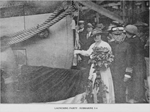 0810964 | 585k | 27 August 1919, S-4 (SS-109) at the Portsmouth (N.H.) Navy Yard, about to be launched and sponsored by Mrs. Herbert S. Howard seen here with Admiral Clifford J Boush, Commandant of the Portsmouth Shipyard. Also notable at the launching was the Secretary to the Assistant Secretary of the Navy, Franklin D. Roosevelt. | Photo & text courtesy of Industrial Department Newsletter Life Buoy, Navy Shipyard Portsmouth, NH, 1919 via pigboats.com courtesy of Ric Hedmen. | |
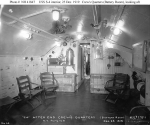 | 93k | Interior view of the S-4 (SS-109), looking aft in the Crew's Quarters (Battery Room), 25 December 1919. Taken by the Portsmouth Navy Yard, Kittery, Maine. Note folding chairs and tables, coffee pot, Christmas decorations and door to the Control Room. | USN photo # NH 41847, from the collections of the US Naval Historical Center. | |
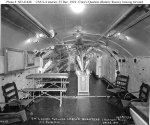 | 106k | Interior view of the S-4 (SS-109), Crew's Quarters (Battery Room), 25 December 1919. Taken by the Portsmouth Navy Yard, Kittery, Maine. Note folding chairs, table, benches and berths; also Christmas decorations. | USN photo # NH 41848, from the collections of the US Naval Historical Center. | |
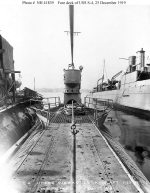 | 108k | View on deck, looking aft from the S-4's (SS-109) bow, 25 December 1919. Taken at the Portsmouth Navy Yard, Kittery, Maine. Israel (DD-98) is partially visible at right. | USNHC photograph # NH 41839. | |
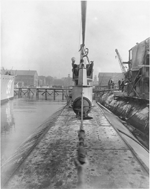 | 102k | View on deck, looking forward from the S-4's (SS-109) stern, 25 December 1919. Taken at the Portsmouth Navy Yard, Kittery, Maine. Israel (DD-98) is partially visible at left. | USNHC photograph # NH 41840. | |
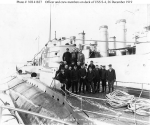 | 104k | One of the S-4's (SS-109) officers and several crew members pose on deck, at the Portsmouth Navy Yard, Kittery, Maine, on 26 December 1919. Destroyer in the immediate background is Israel (DD-98). Note that S-4's 4"/50 deck gun has not yet been installed. | USNHC photograph # NH 41837. | |
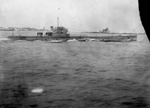 |
1.11k | S-4 (SS-109) underway off Navy Yard Portsmouth, N.H. on 26 December 1919. | Photo # 19-N-2757 courtesy of Scott Koen & ussnewyork.com. | |
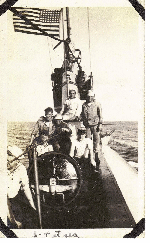 | 154k | S-4 (SS-109) underway, circa 1920. | Official USN photo submitted by Robert M. Cieri. | |
 |
191k | R & S boats
nested together, May 1920, alongside
Submarine Tender Camden (AS-6).
From inboard to outboard: R-4 (SS-81), R-5 (SS-82), R-6 (SS-83), R-10 (SS-87), R-9 (SS-86), R-8 (SS-85), R-7 (SS-84), R-3 (SS-80), S-4 (SS-109) and S-3 (SS-107). Note that all the R-boats have gun platforms, but that guns are fitted only on R-10, and R-3. S-4 has a platform for a 4"/50 gun (but no gun is installed), while S-3 still has no gun platform. |
USN photo # 19-N-9936, from the National Archives and Records Administration (NARA), courtesy of Daniel Dunham. Text i.d. courtesy of USNHC photo # NH 41855. |
|
 |
79k | The Submarine Tender Camden (AS-6)
off New York City with twelve submarines alongside, circa 1920.
Submarines are, from inboard to outboard (left to right): R-1 (SS-78), R-2 (SS-79), R-4 (SS-81), R-5 (SS-82), R-6 (SS-83), R-10 (SS-87), R-9 (SS-86), R-8 (SS-85), R-7 (SS-84), R-3 (SS-80), S-4 (SS-109) and S-3 (SS-107). | Official USN photo # NH 99892, from the collections of the Naval Historical Center. | |
 |
62k | S boats at the Cavite Navy Yard, Philippines, in 1923-1924.
These submarines are (from left to right):
S-17 (SS-122): S-4 (SS-109): S-15 (SS-120); and S-14 (SS-119). |
USNHC photograph # NH 90306. Courtesy of Captain A.L. Prosser, USN (Retired), 1979. | |
 0810962 | 580k | Interior of submarine S-4 (SS-109), snapshot taken by crew sailor. | Photo courtesy of gallica.bnf.fr via Daniel Hacker. | |
 0810963 | 554k | Drawing of S-4 (SS-109) in action. | Photo courtesy of gallica.bnf.fr via Daniel Hacker. | |
 | 103k | The Submarine Tender Holland (AS-3) in port, with several S-boats type submarines alongside, circa 1926.
Note the Submarine Division Eleven insignia on the fairwaters of the two inboard subs.
Submarines present are (from inboard to outboard):
unidentified; S-25 (SS-130): S-7 (SS-112): S-4 (SS-109): S-6 (SS-111) & S-8 (SS-113) . | USNHC photograph # NH 53436. | |
 0810965 | 1.20k | S-4 (SS-109) at Port Angeles, Washington, circa 1925-1926. | Photo NH-41861 & text courtesy of history.navy.mil courtesy of Gary Mcintosh. | |
 0811206 |
581k | Officers and crew of submarines S-7 (SS-112), S-6 (SS-111), S-4 (SS-109), & S-8 (SS-113) are lined up on deck during inspection. | Photo courtesy of gallica.bnf.fr via Daniel Hacker. | |
 |
74k | The S-8 (SS-113) ; S-3 (SS-107); S-4 (SS-109) & S-6 (SS-111) at Portsmouth, NH. The boat on far left can't be identified. | USN photo courtesy of Milne Special Collections, University of New Hampshire Library, Durham, N.H. Photo and text contributed by Ric Hedman/rddesigns.com. |
|
| Loss & Salvage |
||||
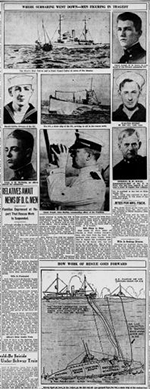 |
NR | WHERE SUBMARINE WENT DOWN—MEN FIGURING IN TRAGEDY HOW WORK OF RESCUE GOES FORWARD Divers fixed air hose to the valves on the S-4 (SS-109) and air was pumped from the S-8 (SS-113), a sister ship of the sunken boat until the air line broke. Nearby is the Falcon (AM-28), from which the divers worked. | Image and text provided by Library of Congress, Washington, DC. Photo from Evening Star. [volume] (Washington, D.C.) 1854-1972, 19 December 1927, Image 2, via chroniclingamerica.loc.gov. | |
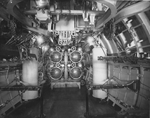 0810933 |
NR | WHERE SIX MEN OF S-4 (SS-109) WERE TRAPPED Interior photo of the torpedo room. The detail of the overhead track for the chain hoists can be seen. There is a fore and aft track that leads to the port and starboard torpedo tubes. There is also a semicircular track that allows the transfer of torpedoes from side to side. The track is "gated" and can be swung into position for the use of the center track. The large vertical tanks on each side are impulse air for firing the torpedoes out of the tubes. The bracing sticking out from the hull on each side provided storage for up to ten torpedoes for reloads. The submarine carried a total of fourteen torpedoes. Four of them were in the tubes and ten in the room. Two each on each of the lower wider brackets and one each on the top shorter bracket. |
Text courtesy of Ric Hedman. USN photo courtesy of Scott Koen & ussnewyork.com. Image and text provided by Connecticut State Library, Hartford, CT. Photo from New Britain Herald. [volume] (New Britain, Conn.) 1890-1976, 21 December 1927, Second Section, Image 18, via chroniclingamerica.loc.gov. | |
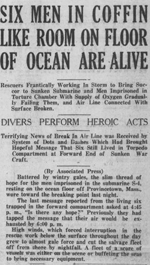 0810951 | NR | SIX MEN IN COFFIN LIKE ROOM ON FLOOR OF OCEAN ARE ALIVE Rescuers Frantically Working In Storm to Bring Succor to Sunken Submarine and Men Imprisoned in Torture Chamber With Supply of Oxygen Gradually Failing Them, and Air Line Connected With Surface Broken. Terrifying News of Break In Air Line was Received by System of Dots and Dashes Which Had Brought Hopeful Message That Six Still Lived in Torpedo Compartment at Forward End of Sunken War Craft. Battered by wintry gales, the slim thread of hope for the men imprisoned in the submarine S-4 (SS-109), resting on the ocean floor off Provincetown, Mass., wore toward the breaking point last night. The last message reported from the living six trapped in the forward compartment asked at 4:45 p. m., "Is there any hope?'’ Previously they had tapped the message that their air would be exhausted by 6:00 p. m. High winds, which forced interruption in the rescue work below the surface throughout the day grew to almost gale force and cut the salvage fleet off from shore by nightfall. A fleet of a score of vessels was either on the scene or buffeting the seas to bring necessary equipment. Besides Lieutenant G. M. Fiteh, the men on the sunken submarine S-4 who still were alive today are R. L. Short, R. A. Crabb, George Pelmar, Frank Snizek and J. L. Stevens, the Boston navy yard announced tonight. | Image and text provided by Arizona State Library, Archives and Public Records; Phoenix, AZ. Photo & text by Douglas Daily Dispatch. [volume] (Douglas, Ariz.) 1903-1961, 20 December 1927, Image 1, via chroniclingamerica.loc.gov. | |
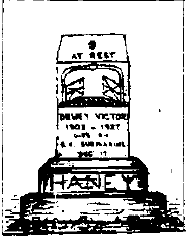 | 129k | Portsmouth Times newspaper PDF file on the sub's sinking and the death of one of the S-4's (SS-109) crew, in particular; Commissary Victor Haney. | Contributed in his memory by his nephew, Raleigh Haney. | |
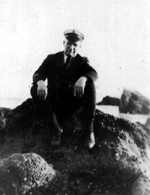 | 44k | Chief Machinists Mate Aaron (Aron) Hodges, of the S-4 (SS-109) at the time of her loss. His body was one of first three recovered from the sub. | Photo courtesy of Robin Hodges Schwartz, Great niece of Aaron (Aron) Hodges, Chief Machinist of the S-4 (SS-109). | |
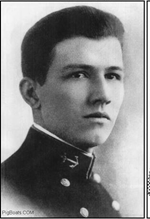 | 83k | Roy Kehlor Jones, Lieutenant Commander (Commanding Officer) of the S-4 (SS-109) at the time of her loss. | USN photo courtesy of Ric Hedman/rddesigns.com. | |
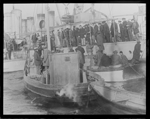 |
259k | Press refused admittance to board Paulding (CG-17) by Admiral Brumby, in charge of S-4 (SS-109) disaster. | Photo courtesy of the Boston Public Library, Leslie Jones Collection via Sean Hert & flickr.com. | |
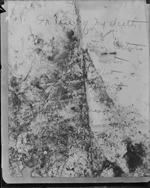 |
277k | S-4 (SS-109) disaster: note written by entombed crewman. | Photo courtesy of the Boston Public Library, Leslie Jones Collection via Sean Hert & flickr.com. | |
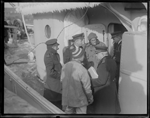 |
685k | S-4 (SS-109) disaster. Officers huddle to plan rescue of crew. | Photo courtesy of the Boston Public Library, Leslie Jones Collection via Sean Hert & flickr.com. | |
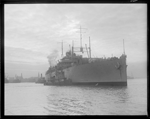 |
102k | Wright sails into Boston with pontoons from Norfolk, VA, to assist in raising the S-4 (SS-109). | Photo courtesy of the Boston Public Library, Leslie Jones Collection via Sean Hert & flickr.com. | |
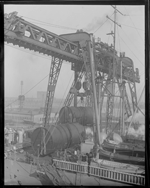 |
241k | Giant crane Hercules removing pontoons from Wright. | Photo courtesy of the Boston Public Library, Leslie Jones Collection via Sean Hert & flickr.com. | |
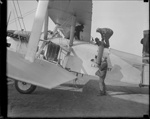 |
771k | Planes from New Jersey being loaded with tanks of nitrogen and oxygen to be flown to S-4 (SS-109) disaster off Provincetown. | Photo courtesy of the Boston Public Library, Leslie Jones Collection via Sean Hert & flickr.com. | |
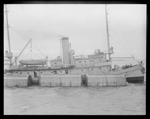 |
660k | Navy tug Sagamore (AT-20) with pontoons, at Provincetown to raise S-4 (SS-109). | Photo courtesy of the Boston Public Library, Leslie Jones Collection via Sean Hert & flickr.com. | |
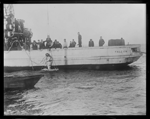 |
680k | Diver from Falcon (AM-28) going down to S-4 (SS-109). | Photo courtesy of the Boston Public Library, Leslie Jones Collection via Sean Hert & flickr.com. | |
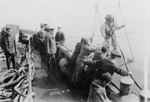 0810957 | 646k | Diving operations during salvage of S-4 (SS-109). Officer behind lines on deck may be Captain King (later fleet admiral). He was in overall charge of salvage operations. | Photo UA 57.03.02 via NHHC courtesy of Darryl L. Baker. | |
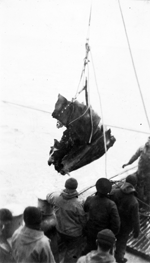 0810958 | 885k | Part of Coast Guard cutter USCGC Paulding. Taken from S-4 (SS-109) by divers during salvage operations off Provincetown, MA. | Photo UA 57.03.03 via NHHC courtesy of Darryl L. Baker. | |
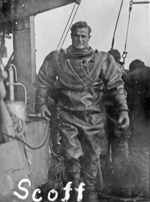 0810959 | 1.40k | S-4 (SS-109) salvage diver Scott. | Photo UA 57.03.04 via NHHC courtesy of Darryl L. Baker. | |
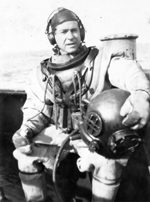 0810960 | 795k | Salvage diver Frank W. Crilley, who worked on the S-4 (SS-109) in 1928. He was awarded the Navy Cross for his actions during the operation. | Photo UA 57.03.05 via NHHC courtesy of Darryl L. Baker. | |
 |
NR | FAMILY CLINGS TO FAINT HOPE. Mrs. Roy Kehlor Jones, wife of Lt. Comdr Jones, commander of the ill-fated submarine S-4 (SS-109) and their two children, Jacqueline and Kehlor at their home, in Baltimore. Mrs. Jones has been kept in constant touch by the Navy Department with efforts to raise the submarine. DIVER IS OVERCOME IN HAZARDOUS SUBMARINE RESCUE WORK. When his air line became entangled in the wreckage of the S-4 on the ocean floor, Fred Michaels, one of the Navy divers who has rendered heroic service at the scene, was nearly suffocated. He was finally cut loose by Diver Thomas Eadie and brought up in a serious condition. This shows Michaels being removed on a streteher from the rescue ship Falcon (AM-28) to be sent to a Boston hospital. NAVY COMBATS EXPOSURE IN RESCUE WORK WITH LIQUOR CONSIGNMENT. Bluejackets carrying alcoholic stimulant aboard a naval ship to be taken out to file rescue ship Falcon, from which diving operations have been directed in the effort to raise the submarine S-4. Northwest gales have subjected the divers and other men aboard the Falcon to intense cold. | Image and text provided by Library of Congress, Washington, DC. Photo from Evening Star. [volume] (Washington, D.C.) 1854-1972, 21 December 1927, Image 2, via chroniclingamerica.loc.gov. | |
 0810961 |
NR | DIVERS FAIL TO FIND SIGN OF SUNKEN CRAFT "Junk," Victim Had Said of Sub S-4 (SS-109) Submarine Lost; Navy’s Disregard Costs Lives of Imprisoned Crew The "pig-boat" running on the surface. Many accidents have occurred to ships of her type. She was crippled, recently repaired, and then sent out in a storm to make a dive, as a means of testing the repairs. No tender was sent with her to keep surface craft away, and one of them collided with her. The whole crew is lost. |
Image and text provided by University of Illinois at Urbana-Champaign Library, Urbana, IL. Photo from The Daily Worker. [volume] (Chicago, Ill.) 1924-1958, 22 December 1927, Final City Edition, Image 2, via chroniclingamerica.loc.gov. | |
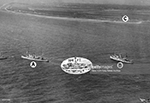 |
695k | The grave of the S-4 (SS-109), off Provincetown, Cape Cod, with naval vessels keeping vigil above spot where submarine went down. The S-4 lies on the bottom lengthwise between positions of the Falcon (AM-28) (A) and the Wandank (AT-26) (B) about a mile from shore (C). | Photo by NY Daily News Archive via Getty Images, courtesy of gettyimages.com. | |
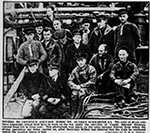 |
NR | DIVERS TO CONTINUE SALVAGE WORK ON SUNKEN SUBMARINE S-4 (SS-109). The crew of divers who have repeatedly risked their lives in work on the S-4, under the direction of Comdr. Edward Ellsberg (second from left in front row). This photograph was taken on the mine sweeper Falcon (AM-28), from which the diving operations are being carried on, after Secretary Wilbur had directed that the work be continued unless the weather forces a halt. | Image and text provided by Library of Congress, Washington, DC. Photo from Evening Star. [volume] (Washington, D.C.) 1854-1972, 26 December 1927, Image 17, via chroniclingamerica.loc.gov. | |
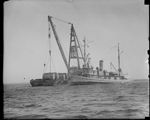 |
877k | Ship and floating crane over sunken S-4 (SS-109) off Provincetown. 40 man crew died. | Photo courtesy of the Boston Public Library, Leslie Jones Collection via Sean Hert & flickr.com. | |
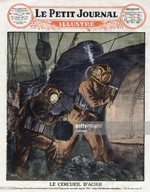 |
629k | Divers attempting to rescue the crew of the submarine S-4 (SS-109), accidentally sunk by a Coast Guard destroyer, on 17 December 1927, Frontpage of French newspaper Le Petit Journal Illustre, 1928. | Photo via Getty Images, courtesy of gettyimages.com. | |
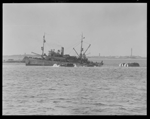 |
795k | S-4 (SS-109) comes to surface off Provincetown after being on the bottom for 4 months in 102 ft. of water. | Photo courtesy of the Boston Public Library, Leslie Jones Collection via Sean Hert & flickr.com. | |
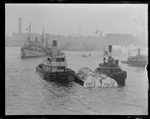 |
811k | S-4 (SS-109) being towed to Navy Yard from off of Provincetown. The trip took 14 hours to go the 49 miles. | Photo courtesy of the Boston Public Library, Leslie Jones Collection via Sean Hert & flickr.com. | |
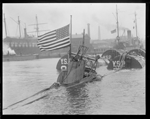 |
861k | S-4 (SS-109) being towed into drydock at Navy Yard. | Photo courtesy of the Boston Public Library, Leslie Jones Collection via Sean Hert & flickr.com. | |
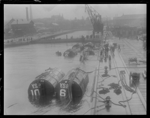 |
899k | View of ill-fated S-4 (SS-109) tied up at pier at Navy Yard before entering drydock. | Photo courtesy of the Boston Public Library, Leslie Jones Collection via Sean Hert & flickr.com. | |
 0810928f | NR | S-4 (SS-109) VICTIM BURIED Impressive rites mark funeral of Lieut Commander Roy K. Jones, skipper of ill-fated submarine, as interment is made at Arlington National Cemetery. | Image and text provided by Connecticut State Library, Hartford, CT. Photo & text by New Britain Herald. [volume] (New Britain, Conn.) 1890-1976, 13 January 1928, Second Section, Image 28, via chroniclingamerica.loc.gov. | |
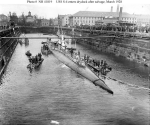 | 141k | S-4 (SS-109) in dry dock at the Boston Navy Yard, Charlestown, Massachusetts, 19 March 1928, following salvage. The original caption reads: "S-4 in drydock, with bodies of eight seamen still sealed in one of its compartments .... The S-4 as she slowly emerged from the water in dry dock today, disclosing the huge hole in her side." The submarine sank after colliding with USCGC Paulding on 17 December 1927. The hole from the collision was in her starboard hull side, just forward of her deck gun, and is not visible in this photograph, which was taken from off S-4's port quarter. Salvage pontoons YSP-10 and YSP-6 are visible in the background. Several diving support rafts are alongside the submarine. | USNHC photograph # NH 41819. | |
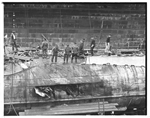 |
384k | Inquiry board inspects S-4 (SS-109) in drydock. | Photo courtesy of the Boston Public Library, Leslie Jones Collection via Sean Hert & flickr.com. | |
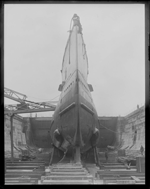 |
899k | Bow view of ill-fated S-4 (SS-109) in drydock. | Photo courtesy of the Boston Public Library, Leslie Jones Collection via Sean Hert & flickr.com. | |
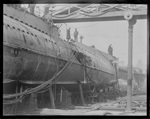 |
923k | S-4 (SS-109) in drydock showing damage. | Photo courtesy of the Boston Public Library, Leslie Jones Collection via Sean Hert & flickr.com. | |
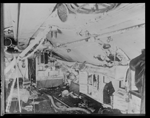 |
222k | S-4 (SS-109) battery room where several of the crew met instant death when salt water reached the batteries and made chlorine gas. | Photo courtesy of the Boston Public Library, Leslie Jones Collection via Sean Hert & flickr.com. | |
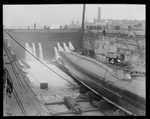 |
918k | S-4 (SS-109) drydock filling up. | Photo courtesy of the Boston Public Library, Leslie Jones Collection via Sean Hert & flickr.com. | |
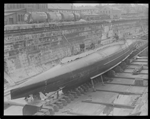 |
970k | S-4 (SS-109) about to be floated. | Photo courtesy of the Boston Public Library, Leslie Jones Collection via Sean Hert & flickr.com. | |
 | 105k | Google Earth satellite photo of the area of Provincetown, Massachusetts where the S-4 (SS-109) sank after colliding with USCGC Paulding on 17 December 1927. | View courtesy of Google Earth. | |
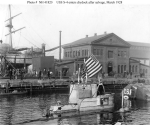 | 94k | View amidships of the S-4 (SS-109), taken soon after entering dry dock at the Boston Navy Yard, Charlestown, Massachusetts, on 19 March 1928. Note flag flying at half-mast, in honor of crewmen who lost their lives when S-4, collided with USCGC Paulding on 17 December 1927. | USN photo # NH 41820, from the collections of the US Naval Historical Center. | |
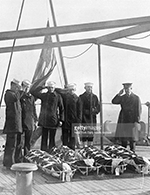 |
635k | Sailors salute bodies recovered from S-4 (SS-109) submarine that sank after collision with USCGC Paulding during an exercise off Provincetown, Cape Cod. | Photo by NY Daily News Archive via Getty Images, courtesy of gettyimages.com. | |
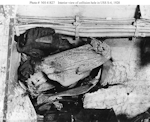 |
158k | Interior view of the hole in the starboard side of S-4 (SS-109) Battery Room, made when she collided with USCGC Paulding off Provincetown, Massachusetts, on 17 December 1927. Photographed at the Boston Navy Yard, Charlestown, Massachusetts, 23 March 1928. A portion of Paulding's bow can be seen protruding through the hole, which is 2 1/2 feet in length and one foot in height. The hole appears to have been packed with folded fabric to reduce water inflow. | USNHC photograph Photo #: NH 41827 via Robert Hurst. | |
 |
613k | Shipyard workers make repairs to the damaged S-4 (SS-109) while she is in dry-dock. | Photo courtesy of Bill Gonyo. | |
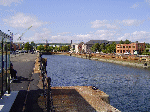 | 203k | Drydock #2, Charlestown Navy Yard, Boston. 23 September 2009. | Photo courtesy of David Johnston. | |
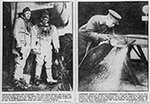 | NR | RESCUE DIVERS ON FALCON (AM-28). The two naval divers who have performed heroic service in the effort to raise the S-4 (SS-109). Thomas Eadie (at left) and William L. Carr. They are shown here prepared for a descent to the sunken submarine from the mine sweeper Falcon. EXPERT AIMS IN RESCUE EFFORTS. Edward Ellsberg, former lieutenant commander in the American Navy and an expert in submarine raising, who is aiding in the attempt to bring the S-4 to the surface. He is shown here demonstrating his under water steel-cutting torch, designed for such emergencies. | Image and text provided by Library of Congress, Washington, DC. Photo & text by Evening Star.[volume] (Washington, D.C.) 1854-1972, 20 December 1927, Image 17,courtesy of chroniclingamerica.loc.gov. |
|
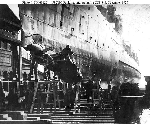 | 102k | USCGC Paulding on the Marine Railway at the Boston Navy Yard, Charlestown, Massachusetts, 26 December 1927, showing damage to her bow from her collision with S-4 (SS-109) on 17 December 1927. | USNHC photograph # NH 69120. Courtesy of the San Francisco Maritime Museum, San Francisco, California, 1969. | |
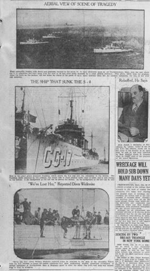 0810949 | NR | While submarine tenders, with divers and pontoons, hurried to the scene, U. S. navy destroyers stood by off Provincetown, Mass., over the spot where the U. S. submarine S-4 (SS-109) went down with her crew of 40 men after being rammed by a coast guard destroyer. This photo, taken from an airplane, shows the boats on the surface; 120 feet below the center of the patch of open water between them lies the stricken submarine, the fate of her crew
still unknown. Here is the coast guard destroyer USCGC Paulding, which struck the S-4 and sent the submarine to the bottom. The USCGC Paulding, badly damaged by the collision, was barely able to reach shallow water close to shore, and is now resting on the bottom. We've lost her, Diver William Wickwire reported when he returned to the deck of the steamship Falcon (AM-28) from the first attempt to locate the sunken submarine S-4 after moderating weather permitted- resumption of salvage operations at Provincetown. Here is Wickwire about to enter the water. The S-4's hull was located, deep in mud, by dragging. |
Image and text provided by Arizona State Library, Archives and Public Records; Phoenix, AZ. Photo from Douglas Daily Dispatch [volume] (Douglas, Ariz.) 1903-1961, 27 December 1927, Image 3, via chroniclingamerica.loc.gov. | |
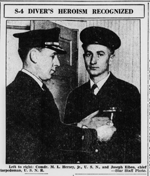 0810952 |
NR | S-4 (SS-109) DIVER’S HEROISM RECOGNIZED Left to right: Comdr. M. L. Hersey, jr., U. S. N., and Joseph Eiben, chief torpedoman, U. S. N. R. GOLD STAR PRESENTED TO TORPEDOMAN EIBEN Naval Hero Risked Life Repeatedly During Attempts to Salvage Sunken Submarine. Joseph Eiben, chief torpedoman, U.S. N. R., was presented with a gold star last night for his diving operations during the attempts to salvage the sunken submarine S-4. at which time he repeatedly risked his life in the work. Chief Eiben received the Navy Cross previously for his diving to the stricken submarine S-51 (SS-162). |
Image and text provided by Library of Congress, Washington, DC. Photo from Evening Star. [volume] (Washington, D.C.) 1854-1972, 29 January 1929, Image 12, via chroniclingamerica.loc.gov. | |
 0816257s | NR | Master Diver in Navy Has Official Trophies of Thrilling Undersea Life Hero of Squalus (SS-192) Rescues, Has Medal of Honor, And Naval Cross Submarine Disasters Gave Field for Washingtonian To Achieve Record A life of adventure underneath the sea has been the role of William Badders, 38-year-old master diver of the United States Navy, ever since that day back in November, 1925. when he volunteered as a diver in the submarine S-51 (SS-162) disaster. The S-51 plunged to the bottom and stayed there, 132 feet below the surface of the Atlantic, off Block Island, after colliding with the steamer City oF Rome. There was a shortage of divers for rescue and salvage operations at the time, and Mr. Badders, member of the ship’s company on the salvage boat Falcon (AM-28), offered himself as a pinch-hitter. Today, Mr. Badders, who lives at 1610 Ridge place S.E., can look back upon 15 years of deep-sea diving, service in the S-51, the S-4 (SS-109) and the Squalus submarine disasters, and to heroic duty that has brought him the Congressional Medal of Honor and the Naval Cross. He rescued 18 of the 33 men saved from the Squalus, and with another diver went down a third time in the diving bell to make sure there were no more survivors. |
Image and text provided by Library of Congress, Washington, DC. Photo from the Evening Star. [volume] (Washington, D.C.) 1854-1972, 17 March 1940, Image 37, via chroniclingamerica.loc.gov. | |
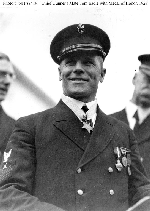 | 68k | Chief Gunner's Mate Thomas Eadie, USN wearing the Medal of Honor, which had just been presented by President Calvin Coolidge in ceremonies at the White House, January 1928. He received the medal for heroism in rescuing another man during diving operations on S-4 (SS-109) on 18 December 1927. Among his other medals are the Navy Cross and the World War I Victory Medal. Standing behind him are Secretary of the Navy Curtis Wilbur (left) and Chief of Naval Operations Admiral Charles F. Hughes. | USNHC photograph # NH 89419. Photo courtesy of Bill Gonyo. |
|
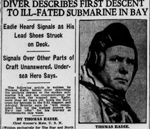 0810953 |
NR | DIVER DESCRIBES FIRST DESCENT TO ILL-FATED SUBMARINE IN BAY Eadie Heard Signals as His Lead Shoes Struck on Deck. Signals Over Other Parts of Craft Unanswered, Undersea Hero Says. |
Image and text provided by Library of Congress, Washington, DC. Photo from Evening Star. [volume] (Washington, D.C.) 1854-1972, 22 December 1927, Image 1 & 4, via chroniclingamerica.loc.gov. | |
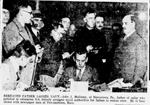 0810927f |
NR | FATHER LASHES NAVY-John J McGinley, of Norristown, Pa., father of sailor who perished in submarine S-4 (SS-109), bitterly arraigns naval authorities for failure to rescue crew. He is here shown with newspapermen from Provincetown, Mass. | Image and text provided by Connecticut State Library, Hartford, CT. Photo from the New Britain Herald. [volume] (New Britain, Conn.) 1890-1976, 30 December 1927, Image 20, via chroniclingamerica.loc.gov. | |
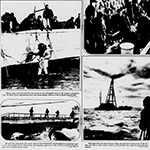 |
NR | While hope still survived for the rescue of the entrapped men in the sunken submarine S-4 (SS-109), A Navy diver descending from the minesweeper Falcon (AM-28) to the ill-fated submersible. Aboard the submarine S-8 (SS-113), sister ship of the ill fated S-4, which played an important part in the attempted rescue, fishermen are sending cigarettes to the crew by a line during the gale which halted rescue work. Heroic service was rendered by navy Divers in the attempted S-4 rescue. This shows Diver L.S. Michaels being carried unconscious from the rescue ship Falcon after nearly losing his life when his air supply was shut off. The giant derrick ship Century riding the gale above the grave of the S-4..... | Image and text provided by Library of Congress, Washington, DC. Photo from Evening Star. [volume] (Washington, D.C.) 1854-1972, 01 January 1928, Image 60, via chroniclingamerica.loc.gov. | |
 |
NR | U.S. NAVY IGNORED HIS SUBMARINE LIFE BOAT Local Inventor Believes 40 Men of the Submarine S-4 (SS-109) Could Have Been Saved If Washington Had Given Him a Hearing in 1918 German Enterprise Utilizes Invention of A Local Man | Image and text provided by University of North Carolina at Chapel Hill Library, Chapel Hill, NC. Photo from The Independent. [volume] (Elizabeth City, N.C.) 1908-1936, 06 January 1928, Image 1, via chroniclingamerica.loc.gov. | |
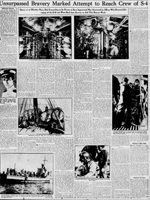 |
NR | Unsurpassed Bravery Marked Attempt to Reach Crew of S-4 (SS-109) Query as to Whether Navy Did Everything in Its Power to Save Imprisoned Men Answered by Officer Who Directed Salvaging of the S-51 (SS-162) and Went Back Into Service to Aid This Rescue Work. | Image and text provided by Library of Congress, Washington, DC. Photo from Evening Star. [volume] (Washington, D.C.) 1854-1972, 08 January 1928, Image 87, via chroniclingamerica.loc.gov. | |
 0810955 |
NR | Standing Guard Over the S-4 (SS-109) Dead The first three bodies to be taken from the sunken hull of the Submarine S-4 are shown above as they rested, flag-draped, on the deck of the Bushnell (AS-2) at Provincetown, Mass. A sailor stands guard over his lost comrades. |
Image and text provided by Arizona State Library, Archives and Public Records; Phoenix, AZ. Photo from Douglas Daily Dispatch. [volume] (Douglas, Ariz.) 1903-1961, 12 January 1928, Image 5, via chroniclingamerica.loc.gov. | |
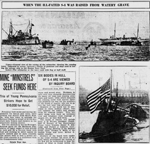 0810956 |
NR | WHEN THE ILL-FATED S-4 (SS-109) WAS RAISED FROM WATERY GRAVE Upper—General view of the raising of the submarine, showing the conning tower (indicated by arrow), between a flotilla of pontoons and ships used in towing the salvage ship to the Boston Navy Yard. Lower—The submarine at the navy yard with flag at half staff. | Image and text provided by Library of Congress, Washington, DC. Photo from Evening Star. [volume] (Washington, D.C.) 1854-1972, 19 March 1928, Image 4, via chroniclingamerica.loc.gov. | |
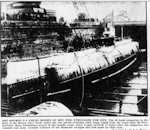 |
NR | DRY-DOCKED S-4 (SS-109) YIELDS BODIES OF MEN WHO STRUGGLED FOR LIFE. The ill-fated submarine in drydock at the Boston Navy Yard where she was placed yesterday after being raised from the ocean floor off Provincetown, Mass. Preliminary search of the torpedo room, where 8 men survived 72 hours after the submarine was rammed and sunk, revealed evidence of the desperate struggle they had made for their lives. |
Image and text provided by Library of Congress, Washington, DC. Photo & text by Evening Star. [volume] (Washington, D.C.) 1854-1972, 20 March 1928, Image 15, courtesy of chroniclingamerica.loc.gov. | |
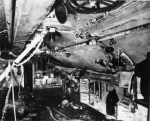 | 98k | Interior view of the Battery Room of the S-4 (SS-109), looking aft and to port, 23 March 1928. Taken while she was in dry dock at the Boston Navy Yard, Charlestown, Massachusetts, after being salvaged off Provincetown, Massachusetts, where she had been sunk in collision with USCGC Paulding on 17 December 1927. The irregular object running the length of the compartment, just above the lockers on the right (port) side, is the collapsed ventilator duct through which water entered the Control Room. Into this duct water forced the curtain and flag, which clogged the valve on the after side of the bulkhead, preventing it from closing. It was this water which forced the abandonment of the Control Room. S-4 flooded through a hole, made by Paulding's bow, in the forward starboard side of the Battery Room. | U.S Navy photo courtesy of Darryl L. Baker, text courtesy of NH 41833, from the collections of the US Naval Historical Center. | |
 0810950 | NR | PROPERTY OF 40 S-4 (SS-109) VICTIMS REVEALS STORIES OF OWNERS. | Image and text provided by Library of Congress, Washington, DC. Photo & text by Evening Star. [volume] (Washington, D.C.) 1854-1972, 25 March 1928, Image 4, via chroniclingamerica.loc.gov. | |
 | 1.09k | S-4 (SS-109), after commissioning for trial of safety devices, at New London, Connecticut, 16 October 1928. | USN photo courtesy of ussubvetsofwwii.org. | |
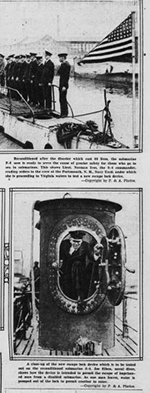 | NR | Reconditioned after the disaster which cost 40 lives, the submarine S-4 (SS-109) now is ready to serve the cause of greater safety for those who go to sea in submarines. This shows Lieut. Norman Ives, the S-4 commander, reading orders to the crew at the Portsmouth, N. H.. Navy Yard, under which she is proceeding to Virginia waters to test a new escape lock device. A close-up of the new escape lock device which is to be tested out on the reconditioned submarine S-4. Joe Eiben, naval diver, shows how the device is intended to permit the escape of imprisoned men from a disabled submarine. As one man leaves, water is pumped out of the lock to permit another to enter. | Image and text provided by Library of Congress, Washington, DC. Photo & text by Evening Star.[volume] (Washington, D.C.) 1854-1972, 18 October 1928, Image 17, courtesy of chroniclingamerica.loc.gov. |
|
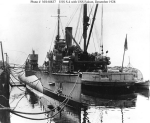 | 105k | S-4 (SS-109), with Falcon (AM-28), 14 December 1928. The original caption reads: "The submarine S-4 just one year after she sank with a loss of forty lives. The repaired craft will be sent to the bottom without anyone aboard at Block Island, New London, Connecticut, to test out various safety devices developed as a result of the S-4 and S-51 (SS-162) disasters." | USN photo # NH 68837, from the collections of the US Naval Historical Center. Courtesy of the San Francisco Maritime Museum, San Francisco, California, 1969. | |
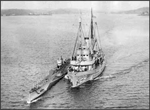 |
293k | S-4 (SS-109) alongside submarine rescue vessel Falcon (AM-28) on 17 December 1928. | Photo # 19-N-2757 courtesy of Scott Koen & ussnewyork.com. | |
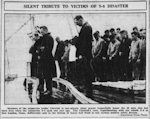 |
NR | SILENT TRIBUTE TO VICTIMS OF S-4 (SS-109) DISASTER. Members of the submarine tender Chewink (ASR-3) in one-minute silent prayer respectfully honor the 40 men who lost their lives when the submarine S-4 sank one year ago. The Chewink's crew, experimenting with the rebuilt S-4 at New London, Conn., deliberately sent to the bottom of Great Salt Pond to test various modern safety devices. |
Associated Press Photo. Image and text provided by Library of Congress, Washington, DC. Photo & text by Evening Star. [volume] (Washington, D.C.) 1854-1972, 19 December 1928, Image 2, courtesy of chroniclingamerica.loc.gov. | |
 | NR | The submarine S-4 (SS-109) seen from the Falcon (AM-28) as it went down in the test dive Monday in Great South Pond, off Block Island. The crewless hulk of the vessel in which 40 men their lives is equipped with lifting hooks as a safety feature for raising it after accidental submersion. At right: A diver being lowered from the Falcon to attach pontoon cables to the lifting hooks on the submarine S-4, by means of which she was partly raised yesterday, bow first. | Associated Press and Wide World Photos. Image and text provided by Library of Congress, Washington, DC. Photo & text by Evening Star.[volume] (Washington, D.C.) 1854-1972, 19 December 1928, Image 17, courtesy of chroniclingamerica.loc.gov. |
|
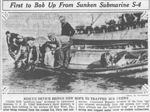 0810966 |
NR | First to Bob Up From Sunken Submarine S-4 (SS-109) RESCUE DEVICE BRINGS NEW HOPE TO TRAPPED SUB CREWS USING THE "artificial lung" developed by Lieutenant Momsen, U. S. N., Chief Boatswain’s Mate Kolinski is shown here bobbing to the surface off Key West, Fla., after being released from the sunken S-4, Navy test submarine. Lieutenant Momsen, inventor of the lung, was also released successfully from the sunken test craft. Navy officials see the "artificial lung" as a means of saving men trapped under water on sunken submarines. |
Image and text provided by Library of Congress, Washington, DC. Photo from The Washington Times. [volume] (Washington [D.C.]) 1902-1939, 09 February 1929, Image 2, via chroniclingamerica.loc.gov. | |
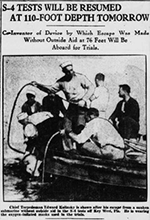 |
NR | S-4 (SS-109) TESTS WILL BE RESUMED AT 110-FOOT DEPTH TOMORROW Co-inventor of Device by Which Escape Was Made Without Outside Aid at 76 Feet Will Be Aboard for Trials. Chief Torpedoman Edward Kalinsky is shown after his escape from a sunken submarine without outside aid in the S-4 tests off Key West, Fla. He is wearing the oxygen-inflated masks used in the trials. | Image and text provided by Library of Congress, Washington, DC. Photo from Evening Star. [volume] (Washington, D.C.) 1854-1972, 10 February 1929, Image 2, via chroniclingamerica.loc.gov. | |
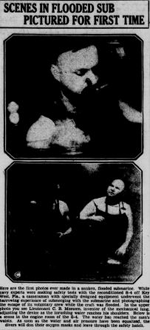 0810954 |
NR | SCENES IN FLOODED SUB PICTURED FOR FIRST TIME Here are the first photos ever made in a sunken, flooded submarine. While navy experts were making safety tests with the reconditioned S-4 (SS-109) off Key West, Fla., a cameraman with specially designed equipment underwent the harrowing experience of submerging with the submarine and photographing the escape of its voluntary crew while the craft was flooded. In the upper photo you see Lieutenant C. B. Momson, inventor of the mechanical lung, adjusting the device as the inrushing water reaches his shoulders. Below is a scene in the engine room of the S-4. The water has reached the men’s waists. As soon as the water and air pressure have been equalized, the divers will don their oxygen masks and leave through the safety hatch. |
Image and text provided by State Historical Society of North Dakota. Photo from The Bismarck Tribune. [volume] (Bismarck, N.D.) 1916-current, 25 February 1929, Image 3, via chroniclingamerica.loc.gov. | |
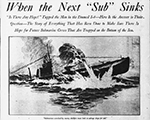 |
555k | When the Next "Sub" Sinks Is There Any Hope?" Tapped the Men in the Doomed S-4 (SS-109) — Here Is the Answer to Their Question — The Story of Everything That Has Been Done to Make Sure There Is Hope for Future Submarine Crews That Are Trapped on the Bottom of the Sea by Commander Edward Ellsberg. |
Image and text provided by Library of Congress, Washington, DC. Photo & text by Evening Star.[volume] (Washington, D.C.) 1854-1972, 07 July 1929, Image 75, courtesy of chroniclingamerica.loc.gov. |
|
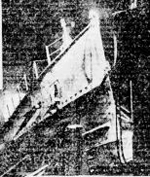 0810930d |
NR | S-4 (SS-109) TEST SUCCESSFUL Down and up in 48 hours is record of submarine S-4, "steel coffin" in which 40 drowned a year ago. In safety tests off Block Island, Conn., the ill-fated submersible shown above in an unusual night photo, was sunk to the bottom and raised again in 48 hours by means of "pad eyes" attacvhed to hulk. | Image and text provided by Connecticut State Library, Hartford, CT. Photo from the New Britain Herald. [volume] (New Britain, Conn.) 1890-1976, 10 December 1930, Image 16, via chroniclingamerica.loc.gov. | |
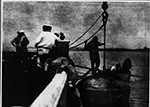 |
NR | Submarine Rescue Test Successful TWO MEN "SAVED" BY MEANS OF NEW DIVING BELL. Two men imprisoned in the motor room of the Navy's experimental submarine, S-4 (SS-109), were brought to the surface safely by means of a diving bell in a test rescue in Long Island Sound off Block Island. Above; The S-4 submerging in 60 feet of water for the test. left; The rescued men climbing out of the chamber of the diving bell through a hatch on top of it. |
Image and text provided by Library of Congress, Washington, DC. Photo & text by Evening Star.[volume] (Washington, D.C.) 1854-1972, 20 July 1931, Image 5, courtesy of chroniclingamerica.loc.gov. |
|
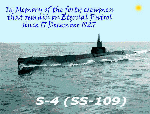 | 43k | Commemorative photo in honor of the memory of the S-4 (SS-109). | Photo courtesy of Tom Kermen. Dante's Prayer courtesy of Loreena McKennitt via loreenamckennitt.com | |
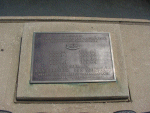 | 91k | Memorial plaque at Independence Seaport Museum, Philadelphia PA, July 2006 for the crews of United States submarines lost during peace time accidents: F-1 (SS-20), F-4 (SS-23), G-2 (SS-27), H-1 (SS-28), O-5 (SS-66), O-9 (SS-70), S-4 (SS-109), S-51 (SS-162), Squalus (SS-192), Scorpion (SSN-589) & Thresher (SSN-593). | Photo courtesy of Wendell Royce McLaughlin Jr. | |
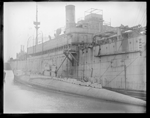 |
348k | Tender & S-4 (SS-109) prior to her scuttling. | Photo 6079897172_beaac752cd_o courtesy of the Boston Public Library, Leslie Jones Collection via Sean Hert & flickr.com. | |
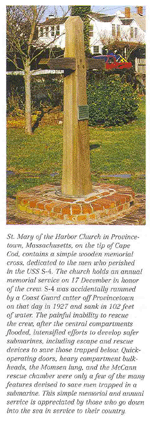 | 245k | Memorial to the crew of the S-4 (SS-109) In Memoriam: In the Second Book of Shmuel (Samuel), 22nd chapter, 5th through the 19th verses, translated from the original in Hebrew and published by the Koren Publishers of Jerusalem, Israel, 1982, can perhaps aptly describe the fate of the crew and all other U.S. submariners who died defending their county: "When the waves of death compassed me / the floods of ungodly men made me afraid; / the bonds of She'ol encircled me; / the snares of death took me by surprise; / in my distress I called upon the Lord, / and cried to my G-D: / and he heard my voice out of his temple, / and my cry entered into his ears. / Then the earth shook and trembled; /the foundations of heaven moved / and shook because of his anger /...the heavy mass of waters, and thick clouds of the skies /... And the channels of the sea appeared, / the foundations of the world were laid bare, / at the rebuking of the Lord, at the blast at the breath of his nostrils. / He sent from above, he took me; / he drew me out of many waters; / he delivered me from my strong enemy, and from those who hated me; for they were too strong for me. / They surprised me in the day of my calamity: / but the Lord was my stay..." | Photo courtesy of Scott Koen & ussnewyork.com. | |
View the S-4 (SS-109)
DANFS history entry located on the Haze Gray & Underway Web Site.
Crew Contact And Reunion Information
Not Applicable to this Vessel
Additional Resources and Web Sites of Interest
On Eternal Patrol
PigBoats.COM TM A Historic Look at Submarines
| Back To The Main Photo Index | Back To the Submarine Index |
| Problems and site related matters, E-mail Webmaster |
| This page is created by Gary Priolo and maintained by Michael Mohl All Pages © 1996 - 2024 NavSource History |